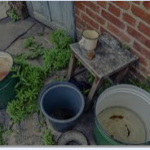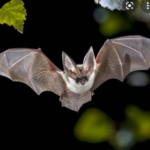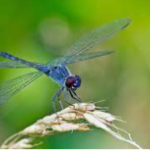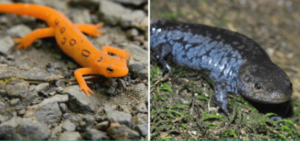Natural Predator control of Mosquito
and No-see-ums (Midges)
by Mike & Roxanne Perkins (Environmental Advocacy
Committee – No-see-um/mosquito predator working group). We would be happy to provide you with more
information. Michael.perkins66@gmail.com
No single approach to insect control is appropriate for all locations. Responsible insect reduction typically requires a multifaceted approach.

Existing chemical pesticides typically cause more long-term problems than they solve. Chemical poisons kill natural predators more effectively than the pests they are intended to kill. Mosquitos and no-see-ums develop resistances to chemicals over time and they are multiplying in increasing numbers. Spraying is only temporarily effective against adult biting midges, because more adults rapidly invade the treated area after the spray dissipates.

The first line of defense against mosquitoes and no-see-ums is the elimination of standing water. This can be accomplished by regularly emptying (or changing) water from flowerpots, bird baths, clogged rain gutters, or other water holding containers.
Natural Predators
There are several natural predators to mosquitos, no-see-ums, and other insects. They include fish, some reptiles, other insects, several species of birds, and bats. Encouraging natural predators should be an important priority in any long-term plan. Bats are the primary predators of many insects that fly at night. Birds and Dragonflies consume a large number of insects during the day. Encouraging these natural predators to live in our community can be key to naturally controlling the insect population.

Bats consume insects, pollinate plants, and disperse seeds. Bats provide insect control year-round in Florida. Installing a well-made bat house in a good location will attract bats to your property without inviting them into your home. Before purchasing a bat house, and installing it, be sure to purchase a quality house that meets their needs and is inviting to them. Bats pose a very low risks to humans and pets and the installation of a bat house is encouraged by Florida Fish and Wildlife. You can find lots of info on Floridabats.org. Do you want to build a bat house? Here are some great articles:

Dragonflies eat a large number of flying insects per day. They live between three and six months and are vicious predators. One study found that dragonfly larvae could play a significant role in the regulation of mosquitoes and no-see-ums. There are several plants that attract dragonflies you can add to your
yard. Dragonfly nymphs can be purchased online. https://www.carolina.com/aquatic-insects/dragonfly-nymphs-living-pk-12/143526.pr

Several native birds eat insects exclusively. They include Chuck-will’s widow, Yellow-billed Cuckoo, Blu-gray Gnatchatcher, Purple Martin, Nighthawk, Whip-poor-will. Installing bird houses designed for specific birds are one way to encourage their numbers in our community. They eat all kinds of insects. Purple Martin is pictured.

Salamanders and newts are more effective and have been used as an alternative means to reduce mosquitoes and no-see-ums presence. Lizards, frogs, and toads occasionally eaters of mosquitoes and no-see-ums and do not consume them in large numbers.
If having one or more of the natural predators around your home does not appeal to you, there are plants and plant-based sprays that will repel mosquitoes and no-see-ums. One of the best mosquito repelling plants is lemon thyme, their strong citrus smell is what drives mosquitoes away. Garlic tea or Rosemary oil can be misted over your yard to control several species of insects. Planting a garden of oil laden herbs can also be an effective strategy.
